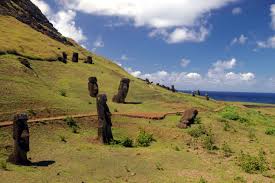Exploring the Mysteries of Easter Island

Introduction
Easter Island, known as Rapa Nui to its indigenous people, is a remote volcanic island located in the southeastern Pacific Ocean. It is famous for its enigmatic Moai statues, which draw thousands of tourists each year. The significance of Easter Island extends beyond its awe-inspiring monuments; it is a site that provides insights into Polynesian culture, sustainability, and the impacts of colonization. Understanding the history and current events surrounding Easter Island can shed light on broader issues of environmental conservation and cultural preservation.
Historical Background
Discovered by Europeans on Easter Sunday in 1722, the island is home to the Rapa Nui people, who have inhabited it for centuries. The Moai statues, which were created primarily between 1400 and 1650 AD, represent ancestral figures and were constructed to honor significant leaders. As population and resource demands grew, the competition for land and materials led to deforestation and societal strife, culminating in the island’s social collapse. Today, only 1,000 of the original 887 statues remain standing.
Current Events and Research
Recent studies have focused on both the restoration of the Moai and the islands’ ecosystems. In 2023, the Chilean government, which oversees Easter Island, allocated funding for preservation efforts to support both the statues and the surrounding environment. Ongoing archaeological excavations have also unveiled new findings, including insights into the construction techniques of the Moai and the agricultural practices of the Rapa Nui people. Additionally, tourism remains a double-edged sword, as it brings in revenue but also places stress on the local ecosystem. Visitors are increasingly encouraged to participate in sustainable tourism practices.
Conclusion
The story of Easter Island is a powerful reminder of the balance between human activity and environmental stewardship. As the site grapples with the challenges of modernization and conservation, the experiences of Rapa Nui people serve as crucial lessons for today’s world. Looking ahead, fostering a dialogue around sustainable tourism and cultural preservation will be critical in ensuring that this unique island can endure for future generations to appreciate. The ongoing research and dedication to sustainability amid the complexities of global tourism offer hope for preserving both the physical and cultural heritage of this remote paradise.









